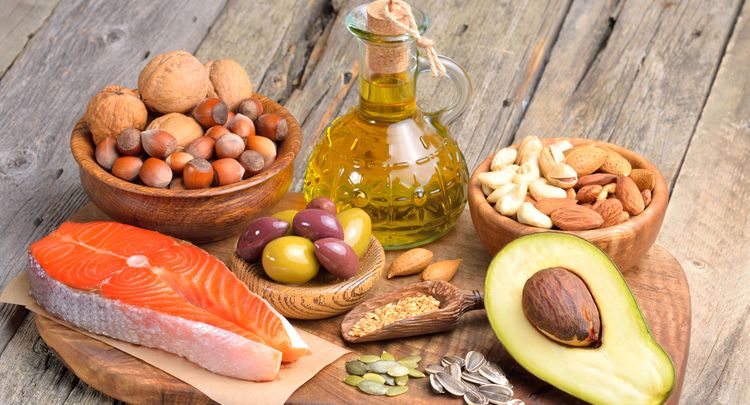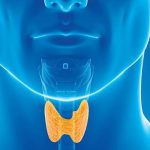Fat!!!
Would all of our weight loss issues be sorted if we just shut out fat from our diets? Sadly, it’s not that simple. Indeed, we need fats and can’t live without them.
In fact, fats are an essential part of a healthy diet. They offer essential fatty acids, keep our skin soft, deliver fat-soluble vitamins, and are a huge source of energizing fuel. But it’s easy to get baffled about good fats vs. bad fats, how much fat we should consume, how to avoid artery-clogging trans fats and the significance of omega-3 fatty acids in heart health.
The U.S. Department of Agriculture’s 2005 Dietary Guidelines advises that adults get 20%-35% of their calories from fats. At a minimum, we require at least 10% of our calories to come from fat.
Approximately, 34% to 40% of our calories come from fat. Why? Because they are so palatable and are universally available in our food supply. Fats boosts the flavors of foods and give our mouths that wonderful feeling which is so satisfying.
What Are The Causes of Obesity?
Well, you might infer that fat is to accusation for the obesity epidemic now haunting in the world. In fact, fat is only part of the issue. Obesity is much more perplexing than just gluttonize a single nutrient.
Causes of obesity are as follows:
- Consuming more calories from fats, carbohydrates, protein, and alcohol than you burn off result in weight gain.
- Commonly, people who have little physical activity and eat a diet rich in calories are lead to gain weight.
- Genetics, age, sex, and lifestyle also count into the weight-gain credo.
- Dietary fat plays a key role in obesity. Fat is rich in calorie about 9 calories per gram, while carbs and protein constitute only 4 calories per gram, and alcohol contains 7 calories per gram. It’s easy to overeat fats as they lurk in so many foods we love such as french fries, processed foods, cakes, cookies, chocolate, ice cream, thick steaks, and cheese.
Eating too much fat does more than increasing our waistlines. Our love affair with fat has bolstered to set off a rise in the rates of type 2 diabetes, certain cancers, and heart disease.
Choosing the right types of dietary fats to eat is one of the most significant factors in reducing the risk of developing heart disease.
But while making a choice healthier fats is superior for your heart, when it comes to your waistline, all fats have about the equal number of calories. And curbing the total fat in your diet not only helps you drop pounds, but it can also aid you to live longer and healthier.
“There is a strong association between being overweight and many types of cancer, especially breast cancer among postmenopausal women, and colon cancer,” states Colleen Doyle, MS, RD, nutrition and physical activity director for the American Cancer Society.
“Eating less total fat will not directly lower your cancer risk, but it will help you control your weight which in turn can reduce your risk of cancer.”
Good Fats vs. Bad Fats
In general, there are two groups of fats: saturated and unsaturated. Within each group are a lot more types of fats.
The Unsaturated Fats
Unsaturated fats consist of polyunsaturated fatty acids and monounsaturated fats. Both mono- and polyunsaturated fats, when consumed in moderation and used to replace saturated or trans fats, can aid to lower cholesterol levels and down pat your risk of heart disease.
Polyunsaturated fats which are mostly found in vegetable oils, help decrease both blood cholesterol levels and triglyceride levels especially when you alternate them for saturated fats. One type of polyunsaturated fat is omega-3 fatty acids, whose potential heart-health benefits have gained a lot of attention.
Omega-3s are found in fatty fish such as salmon, trout, catfish, mackerel, as well as flaxseed and walnuts. And it is a fish that consist of the most effective, “long-chain” type of omega-3s. The American Heart Association advise eating 2 servings of fatty fish each week.
Plant sources are a good alternative for saturated or trans fats, but they are not as beneficial as fatty fish in reducing cardiovascular disease. Just keep in mind that your twice-weekly fish should not be deep-fat fried!
It is best to have your omega-3s from food, not from supplements. Except for people with identified heart disease, there is no data to recommend omega-3 supplements will minimize the risk of heart disease.
Other unsaturated fats are monounsaturated fats which are believed to decrease the risk of heart disease. Mediterranean countries consume lots of these mainly in the form of olive oil and this dietary constituent is believed with the reduced levels of heart disease in those countries.
Generally, monounsaturated fats are liquid at room temperature but solidify if refrigerated. These heart-healthy fats are normally a marvelous source of the antioxidant vitamin E, a nutrient often scarce in American diets. They can also be found in olives, avocados, hazelnuts, almonds, Brazil nuts, cashews, sesame seeds, pumpkin seeds and olive, canola, and peanut oils.
Saturated and Trans Fatty Acids
There are two types of fat that should be eaten lightly which is saturated and trans fatty acids. Both can increase cholesterol levels, clog arteries, and enhance the risk of heart disease.
Saturated fats are mainly found in animal products such as meat, poultry skin, high-fat dairy, and eggs and in vegetable fats which are liquid at room temperatures, such as coconut and palm oils.
The 2005 Dietary Guidelines suggest limiting saturated fats to 10% or less of your total calories, whereas the American Heart Association recommends keeping them to just 7% of total calories.
It is recommended to use liquid vegetable oils in place of animal or partially hydrogenated fats.
We are also hearing so much these days about trans fatty acids, or trans fats. There are two types of trans fats;
- The naturally occurring type, found in small amounts in dairy and meat
- The artificial kind that occurs when liquid oils are hardened into “partially hydrogenated” fats.
Natural trans fats are not the type of attention, in particular, if you prefer low-fat dairy products and lean meats. The real problem in the American diet is artificial trans fats. They are used broadly in frying, baked goods, cookies, icings, crackers, packaged snack foods, microwave popcorn, and some margarine.
Some experts also believe these fats are even more threating than saturated fats.
Research has revealed that even small amounts of artificial trans fats can raise the risk of heart disease by increasing LDL “bad” cholesterol and reducing HDL “good” cholesterol.
The American Heart Association (AHA) suggests limiting trans fat to less than 2 grams per day, including the naturally occurring trans fats.
The U.S. Dietary Guidelines simply advise keeping trans fats consumption as low as possible.
Still, stamp out of trans fats is not a magic bullet, experts say.
“Trans fat is getting lots of bad press, but it is important to keep in mind the ‘big fat picture,’ which includes lowering total fat, reducing saturated fat, and engaging in an overall healthy lifestyle,”
Classification of Food On The Basis of Fat Types
Most foods contain a fusion of fats but are characterized according to the dominant fat.
This chart lists sources of the good-for-you unsaturated fats as well as some examples of fats you want to ignore.
| Saturated Fats or trans fatty acids | Polyunsaturated Fats | Monounsaturated Fats |
| Butter | Corn Oil | Canola oil |
| Lard | Fish oils | Almond oil |
| Meat, lunchmeat | Soybean oil | Walnut oil |
| Poultry, poultry skin | Safflower oil | Olive oil |
| Coconut products | Sesame oil | Peanut oil |
| Palm oil, palm kernel oil, and products | Cottonseed oil | Avocado |
| Dairy foods (other than skim) | Sunflower oil | Olives |
| Partially hydrogenated oils | Nuts and seeds | Peanut butter |
Read The Labels and Make Better Choices
The best method to keep top of the fats in your diet is to become a label reader. On the nutrition facts panel, you will find the information you need to make healthful choices. seek foods that are low in total fat and well as in saturated and trans fats. keep in mind that a product whose label boasts it is “trans-fat-free” can actually have up to 0.5 grams of trans fats per serving and these can add up quickly.
Tips To Reduce Fat In Diet
Here are some tips to help you decrease the total amount of in your diet and make sure the fats you eat are the healthy ones:
- Choose a diet rich in whole grains, fruits, and vegetables
- Try a vegetarian meal, with plenty of beans, once a week
- Select dairy products that are skim or low-fat.
- Experiment with light and reduced-fat salad dressings
- Replace fattier sauces with vinegar, mustards, and lemon juice
- When using fats, do so sparingly. Try to use unsaturated liquid oils, such as canola or olive, instead of butter or partially hydrogenated margarine
- Limit your consumption of high-fat foods, such as processed foods, fried foods, sweets, and desserts.
- When cooking, substitute the lower-fat alternative (for example, low-fat sour cream or low-fat cream cheese) whenever possible



